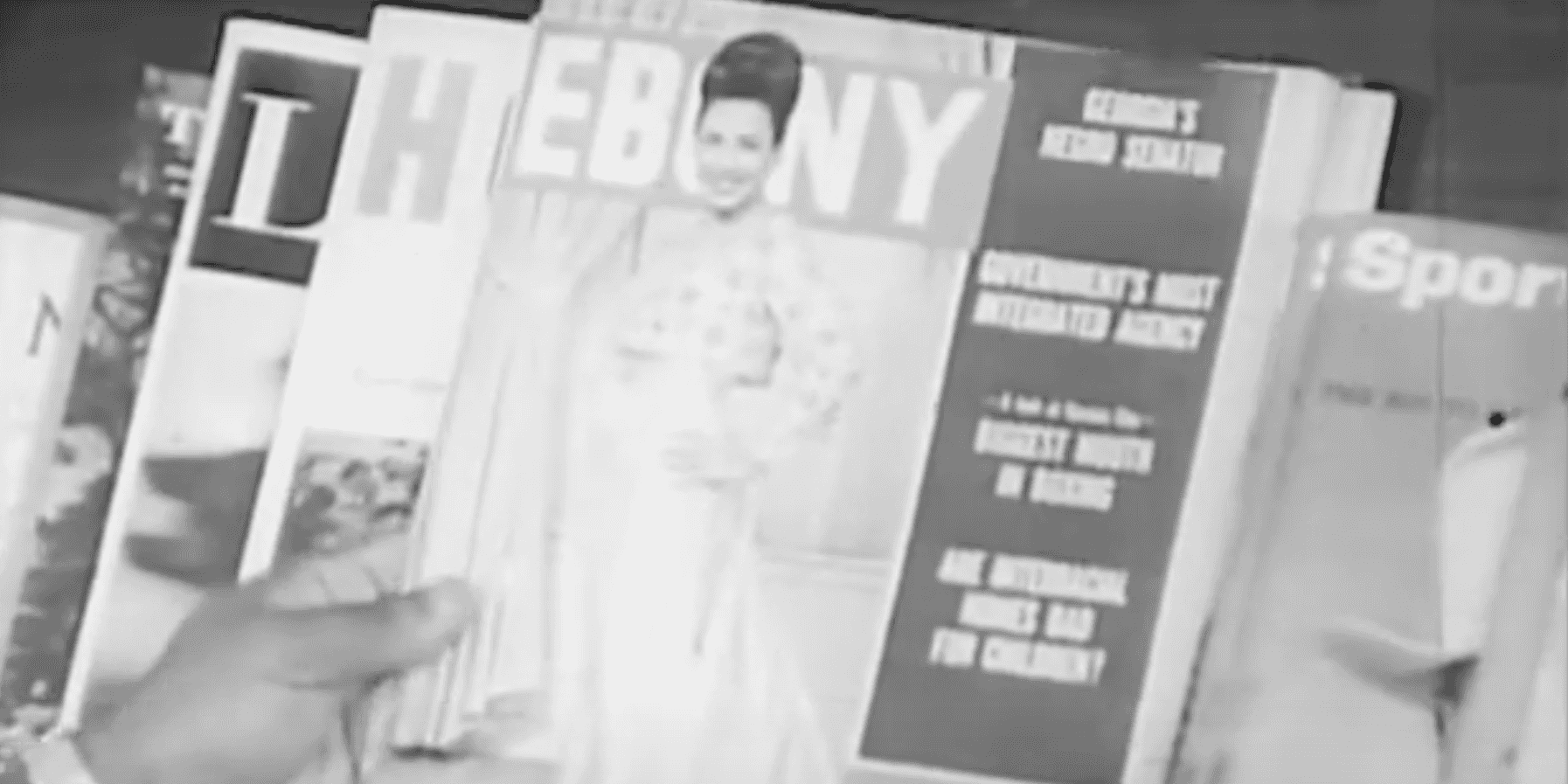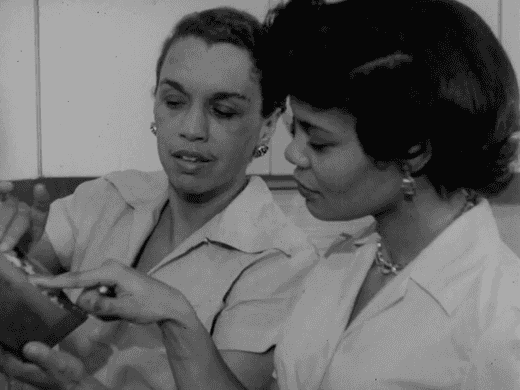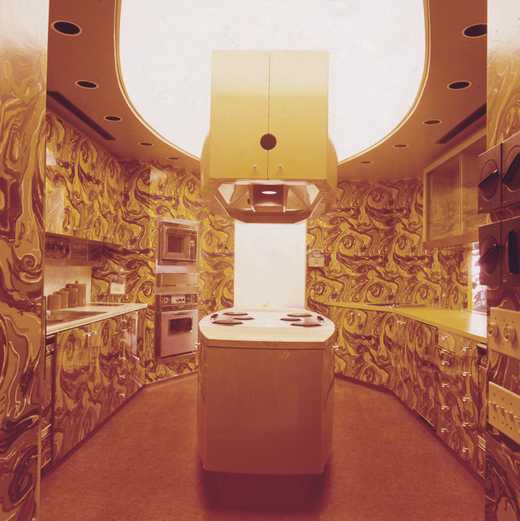Johnson Publishing Company: Image Power
From Ebony and Jet magazines to advertising and fashion, John H. Johnson’s company revolutionized how Black Americans saw themselves.
John H. Johnson
John H. Johnson, founder of Johnson Publishing Company, ca. 1967
One of the most successful Black entrepreneurs in American history, John H. Johnson (1918–2005) was born into poverty in Arkansas. During the Great Depression, he migrated to Chicago with his family and entered the insurance business. In 1942 he started his first magazine, Negro Digest, with a $500 loan. He went on to launch Ebony in 1945, followed by Jet in 1951. Over the ensuing decades, Johnson built the world’s largest Black-owned publishing company. He raised revenue, and transformed the advertising industry, by convincing major corporations to advertise in Black magazines. Johnson also published books on Black history, started a cosmetics line, and founded Chicago’s first Black-owned radio station. He received numerous honors and awards during his lifetime, including the Presidential Medal of Freedom in 1996.
Negro Digest/Black World
Negro Digest, Vol. 1, No. 1, November 1942
Negro Digest, Vol. 17, No. 3, January 1968
Black World, Vol. 24, No. 7, May 1975
In November 1942, John H. Johnson launched his first magazine, Negro Digest. Modeled after Reader’s Digest, it featured articles on a range of political, social, and cultural topics, with a focus on the nation’s involvement in World War II and the ongoing struggle for racial equality. After Johnson persuaded First Lady Eleanor Roosevelt to write a guest column, “If I Were a Negro,” for the October 1943 issue, magazine sales doubled, from 50,000 to 100,000.
Johnson ceased publishing Negro Digest in 1951, but reintroduced the magazine in 1961, and it continued publication until 1976. Under the editorship of Hoyt W. Fuller, it became a major cultural platform for artists and writers of the Black Arts Movement, with special annual issues devoted to fiction, poetry, and theater. The magazine was retitled Black World in 1970, to emphasize the shared histories and common struggles of people throughout the African diaspora.
We wanted to give Blacks a new sense of somebodiness, a new sense of self-respect.
John H. Johnson, 1975
Ebony
Ebony, Vol. 4, No. 12, October 1949
Launched by Johnson Publishing Company in November 1945, Ebony provided a view of Black America never seen before in popular media. A glossy pictorial magazine similar to Life, it featured successful figures from politics, business, sports, and entertainment along with the first national-brand advertisements to use Black models. From its first issue, which sold out at 25,000 copies, Ebony became the world’s widest-read Black magazine, eventually reaching a peak circulation of over 2 million and a total audience of more than 11 million readers. Its eye-catching covers and richly illustrated pages showcased the talents of staff photographers such as Moneta Sleet Jr., the first African American to win the Pulitzer Prize. Ebony’s editorial leadership included journalist and international correspondent Era Bell Thompson and historian Lerone Bennett Jr. The magazine also spawned several spin-off publications: Ebony Jr.!, EM (Ebony Man), and Ebony South Africa.
Jet
Jet, Vol. 1, No. 1, November 1, 1951
Jet, Vol. 26, No. 16, July 23, 1964
Jet, Vol. 108, No. 12, September 19, 2005
Building on the success of Ebony, Johnson Publishing Company introduced Jet in November 1951. This pocket-sized, photo-illustrated weekly news magazine offered “complete news coverage on happenings among Negroes all over the U.S.—in entertainment, politics, sports, social events as well as features on unusual personalities, places, and events,” according to founder John H. Johnson. Over the decades, Jet provided a steady stream of bite-sized information along with in-depth reporting on current issues. In 1955 the magazine published groundbreaking coverage of the murder of Emmett Till, which became a catalyzing event in the emerging Civil Rights Movement. Jet also served as a guide to the new medium of television, with weekly listings of Black entertainers, athletes, and public figures appearing on TV shows. Jet continued to deliver its pocket-sized package of weekly news and entertainment for over 60 years, until shifting to an all-digital format in 2014.
Hue, Vol. 1, No. 11, June 16, 1954
Hue, another Johnson Publishing Company magazine, debuted in November 1953. Produced in a pocket-sized format like Jet, it focused on entertainment, fashion, and celebrities. Hue ceased publication in 1959.
Black Stars, Vol. 28, No. 4, February 1979
Originally launched in November 1950 as Tan Confessions, this Johnson Publishing Company magazine was renamed Tan in 1952. In 1971 it was rebranded again as Black Stars, and retained that title until it ceased publication in 1981.
Prior to John H. Johnson’s launch of Negro Digest and Ebony in the 1940s, other Black publishers had sought to create a popular monthly magazine. While these early publications reflected different approaches in terms of style and content, they shared a common goal of promoting pride in African American culture and achievement. They also helped to cultivate an educated, middle-class Black audience for popular magazines that would be crucial to Johnson Publishing Company’s success.
The Ebony Fashion Fair
Eunice W. Johnson (in pink) with models at the 33rd Annual Ebony Fashion Fair, 1991
Eunice Walker Johnson (1916–2010), co-founder of Johnson Publishing Company, shared her husband’s commitment to promoting images of Black success, style, and beauty. Her signature achievement was the Ebony Fashion Fair, an annual traveling fashion show held from 1958 to 2009. Featuring glamorous models in haute couture, the show fostered interest in Black designers and raised millions of dollars for charity. In 1972 she also introduced Fashion Fair Cosmetics, a line of high-end beauty products for women of color.
The Johnson Publishing Company Archive
Roy Wilkins, Martin Luther King Jr., and A. Philip Randolph, 1957
Miriam Makeba and Stokely Carmichael, 1968
Tina Turner, 1982
In 2019, the Johnson Publishing Company archive—a collection of over 4 million negatives and slides, photographs, and audio and visual recordings—was acquired for $30 million by a nonprofit consortium that consists of the Smithsonian Institution, the J. Paul Getty Trust, the Ford Foundation, the Andrew W. Mellon Foundation, and the John D. and Catherine T. MacArthur Foundation. The consortium’s purpose is to ensure that this unparalleled archive of 20th-century African American life is preserved, protected, and made accessible to the public.
More information about the Johnson Publishing Company Archive is available on the NMAAHC website.
A Visit to Johnson Publishing Company, ca. 1963

Take a trip back in time to see John H. Johnson and his staff at work in the company’s headquarters in Chicago in this episode of “Personal Report,” a television show produced by the United States Information Agency and hosted by Michael Kubeyinje, a Nigerian student in Washington, D.C.




